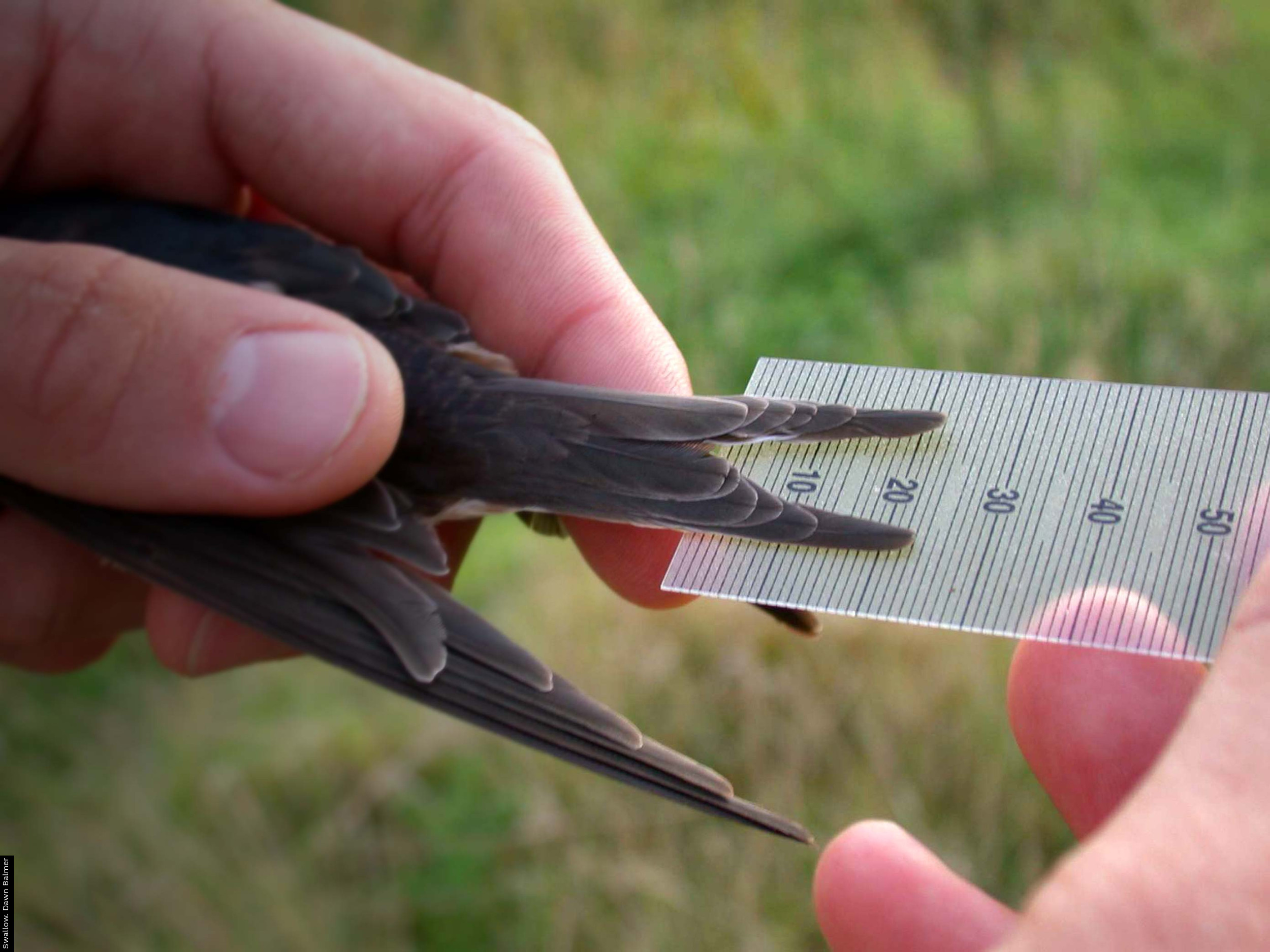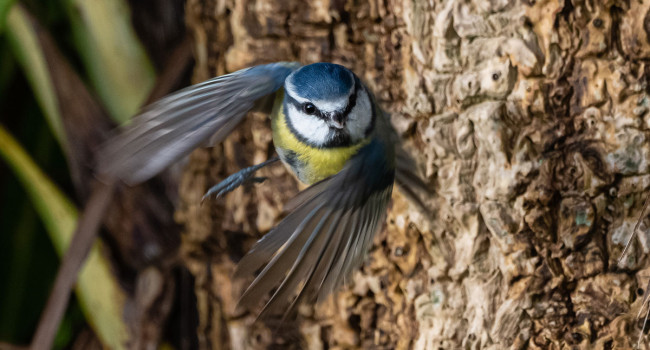Preliminary report on the 2019 breeding season

The primary aim of BTO surveys is to monitor changes in the health of Britain’s birds, tracking declines and increases via the BTO/JNCC/RSPB Breeding Bird Survey (BBS) and exploring the factors driving them through bird ringing and nest recording. The long-term trends in abundance, survival and breeding success generated by these schemes are presented on the BirdTrends webpages.
How do we monitor the breeding season?
All of the data presented here are collected by BTO volunteer ringers and nest recorders and we are extremely grateful for their efforts, both in collecting the data and submitting it promptly. Numbers of adult birds are monitored by qualified bird ringers running a network of approximately 140 Constant Effort Sites (CES) across Britain & Ireland between May and August. As their effort is standardised annually, the number of birds caught in each year provides an accurate measure of changes in abundance. Recaptures of birds ringed in previous years also allow survival rates to be calculated. The timing of nesting and the number of fledglings reared during each breeding attempt is monitored by over 700 participants in the Nest Record Scheme (NRS), each of whom locates nests to count the eggs and young inside at regular intervals. The ratio of juvenile to adult birds caught on CESs provides a second measure of breeding success that also takes into account the number of successful breeding attempts made per adult (as many species attempt to rear more than one brood per season) and the survival of young birds immediately after fledging.
CES covers 24 woodland, scrub and reedbed species, while NRS covers 150 species breeding across all habitats, from gardens to remote hillsides. Not all of the CES and NRS data collected in 2019 have been received yet, so these results are based on a subset of sites and species for which we currently hold sufficient data to analyse.
What was the weather like in 2019?
Winter 2018/19 was milder than average, with unsettled weather in December, periods of frost and snowfall in late January and early February followed by record-breaking daytime temperatures in the last week of February. Spring started with two named storms bringing wet, windy and unsettled weather in March, particularly in western and northern areas. By mid-April, the nation was experiencing 20 degree temperatures, followed by another named storm, this time in the south. Despite the varied conditions, overall, spring was slightly warmer than the mean for this period.
The start of the CES season was cooler, particularly at night, but the rest of the season was generally warmer than average. June proved to be a wet month, whereas July was more settled, despite numerous thundery outbreaks later in the month. New UK maximum temperature records were set on 29 June and 25 July. The weather in August was more unsettled and showery, with high temperatures later in the month, particularly in the south-east. The summer was classified as the 12th warmest and 7th wettest since 1910.

Mixed bag for migratory species
CES results show that it was a mixed year for migratory warblers. Short-distance migrants Chiffchaff and Blackcap, and the long-distance migrant Whitethroat, were encountered in particularly high numbers relative to the five-year mean (2014–2018; Table 1). The number of adult Blackcaps encountered was the highest since CES monitoring begin in 1983, and survival rates were also the highest on record, suggesting that conditions were good on their wintering grounds over the 2018/19 winter. It is particularly pleasing to see an increase for Whitethroat following significant declines in every year since 2013; this increase was predominantly driven by results in the east of the country.
Less positively, numbers of adult Sedge and Reed Warbler in 2019 were significantly lower than the five-year mean. The long-term trends for both species also show declines, with Sedge Warbler exhibiting a particularly steep drop in numbers since CES began in 1983 (-66%), culminating in the lowest numbers ever recorded in 2018 and the second lowest total in 2019. The drop in Sedge Warbler numbers mirrors the decline seen in BBS results; however the BBS trend for Reed Warbler is positive, contradicting the results seen on CES. As with Whitethroat, the Reed Warbler results were particularly reflective of the situation in the east of the country.
Table 1. Adult abundance and breeding success calculated from 2019 CES data. Figures represent a percentage change relative to the five-year average (2014–18), with lower and upper 95% Confidence Intervals given in brackets. Statistically significant (p < 0.05) positive and negative changes are highlighted in blue and red respectively. '*' denotes a small sample size.
|
||||||||||||||||||||||||||||||||||||||||||||||||||||||||||||||||||||||||||||||||||||||||||||||||||||||||||||||||||||||||||||||||||||||||||||
…and residents
The biggest winners in 2019 were the tits (Blue, Great and Long-tailed) as well as Treecreeper and Goldfinch (Table 1), each of which recorded a significant increase in abundance compared to the five-year mean. Goldfinch numbers continue to rise, with the highest ever number of adults recorded on CES in 2019; the four most-abundant years have all occurred in the last five seasons. Treecreeper bounced back from a poor year in 2018 and was also recorded in far greater numbers in 2019 than in any previous year. It is possible that the species benefited from higher overwinter survival during the mild winter of 2018/19, although as the CES sample size is unfortunately not large-enough to calculate a survival rate for Treecreeper. Blue Tit was the only species to record a statistically significant decline in adult survival, suggesting that significant increase in abundance recorded during 2019 was likely to have resulted from high juvenile recruitment following a successful breeding season in 2018. Great Tit productivity was also high in 2018, which is likely to have contributed to the above average numbers captured on CES this year. Long-tailed Tit productivity decreased in 2018, so the mechanism underpinning the increased abundance recorded in 2019 is likely to have been an increase in overwinter survival of juvenile birds, given survival was not significantly higher than average. The long-term trends (1983–2019) for all five species are positive.
The main losers in 2019 were species that tend to feed on the ground, with statistically significant declines in abundance, relative to the five-year mean, recorded for Blackbird, Robin, Dunnock, Chaffinch, Greenfinch and Reed Bunting. Fewer Blackbirds, Dunnocks, Chaffinches and Greenfinches were recorded than in any previous year since CES began. For Chaffinch and Greenfinch, the 41% and 40% decreases respectively compound previous poor results and the long-term trends for both species show steep declines. Nine of the lowest abundance years on record have occurred in the past 10 years for Chaffinch, while for Greenfinch, the lowest eight years have occurred in the past 10 seasons.
The long-term trends for Blackbird, Dunnock and Reed Bunting also exhibit declines, with that for Reed Bunting being the steepest, numbers having fallen to the second-lowest on record in 2019; only Robin demonstrates a positive long-term trend in abundance. The adult survival rates for Blackbird were the highest on record, and those for Robin, Dunnock and Reed Bunting were also reasonably high, suggesting the decline in abundance was caused by poor recruitment. Robin was the only one of these species to record a statistically significant increase in productivity in 2018, suggesting that juveniles of this species fared particularly badly over the 2018/19 winter. The decline in Reed Buntings was particularly driven by results in the east of the country, whereas for the other species, the declines were more widespread.

Early breeding season
NRS data indicate that many species bred significantly earlier in 2019 compared with the five-year mean (Table 2). For five migrant species, Swallow, Willow Warbler, Blackcap, Pied Flycatcher and Redstart, this resulted in laying dates being between three and five days earlier than average. While Blackcap experienced the greatest advance, mean Swallow laying dates were the earliest on record, though it should be noticed that, as a multi-brooded species, this could equally reflect a decline in numbers of broods produced per pair. BirdTrack data indicate that arrival dates for Blackcap were slightly earlier than normal in 2019 but no corresponding advance was apparent for the other species exhibiting earlier laying and arrival of Willow Warbler actually appeared slightly delayed.
Laying dates for seven passerines, Blue, Great and Long-tailed Tit, Wren, Blackbird, Song Thrush and Tree Sparrow, were advanced by between five and nine days in 2019; for Long-tailed Tit, Wren and Song Thrush, mean dates were the earliest on record. It is possible that these species took advantage of the warmer-than-average weather in early spring, and mini-heatwave in mid-April, to start breeding earlier than normal. It is also possible that the wetter-than-average conditions experienced across England and Wales in June in particular, and in Scotland later in the summer reduced their propensity to produce repeat broods, thereby shifting mean laying dates earlier.
Only two species, Stock Dove and Barn Owl, exhibited statistically significant delays in breeding in 2019 compared to the five-year mean, laying 18 and 13 days later than average respectively. The warm summer is may have stimulated birds to produce second broods, thus shifting the average laying date later into the year.
|
Table 2. Laying dates and breeding success calculated from 2019 NRS data. Laying dates are given as the number of days earlier or later than the five-year average (2014-18) while productivity figures represent a percentage change relative to the five-year average. Statistically significant (p < 0.05) positive and negative changes are highlighted in blue and red respectively. ‘*’ denotes small sample size (< 25 records).
|
||||||||||||||||||||||||||||||||||||||||||||||||||||||||||||||||||||||||||||||||||||||||||||||||||||||||||||||||||||||||||||||||||||||||||||||||||||||||||||||||||||||||||||||||||||||||||||||||||||||||||||||||||||||||||||||||||||||||||||||||||||||||||||||||||||||||||||||||||||||||||||||||||||||||||||||||||||||||||||||||||||||||||||||||||||||||||||||||||||||||||||||||||||||||||||||||||||||||||||||||||||||||||||||||

Average breeding season for most, but excellent for some
For many species, 2019 was an average breeding season, with significant changes generally suggestive of increased success. CES results indicate that for seven species, productivity was significantly higher than average in 2019 (Table 1) while NRS data reveal that six species produced above-average numbers of fledglings per breeding attempt (FPBA) (Table 2).
Chiffchaff was the only migrant species monitored through CES for which productivity was above average across all regions. None of the parameters monitored through NRS (e.g. egg- or chick-stage survival, FPBA) demonstrated significant increases, suggesting that either the mean number of broods produced per pair increased or that juvenile survival immediately after fledging was higher than average. Both Pied Flycatcher and Redstart both raised above average numbers of fledglings per attempt in 2019.
Resident passerines Robin, Dunnock, Chaffinch, Reed Bunting, Blue Tit and Long-tailed Tit all exhibited increased productivity on CE Sites; for Chaffinch this represented the highest productivity rate since CES began. The first four species, all of which were present in lower numbers during 2019, are likely to have benefited from reduced competition for resources, allowing remaining pairs to successfully fledge more young. NRS data show that Blue and Great Tits had a particularly successful year, recording statistically significant increases in clutch and brood size, young-stage survival and therefore in total fledgling production. The only other species to produce an above-average number of fledglings were Tree Pipit and Linnet, although it is unclear what the mechanisms underpinning their success were.
The only species to exhibit a decrease in productivity on CE Sites was Garden Warbler; the cause of this decline is unclear but it unlikely to be due to density dependence as no significant increase in abundance was recorded. CES data indicate that, across all species, productivity was lowest in the west, with fewer species exhibiting statistically significant increases in productivity in that region.
Help us to monitor birds in 2020
The records used to produce the NRS results are generated by over 700 NRS volunteers, who monitor nests ranging from Blue Tit boxes in gardens to seabird colonies on cliffs. If you haven't tried nest recording before, why not give it a go? Email us for a Quickstart Guide or visit the NRS web pages to find out more.
If you are a qualified ringer with access to an area of scrub, woodland or reedbed where there is the potential to catch at least 250 birds per season, why not register a CES? And if you aren’t able to start your own site, why not consider helping out at an existing one? Contact the CES Organiser for more information.
Acknowledgements
We are extremely grateful to all Constant Effort Site ringers and nest recorders for their monitoring efforts and for the support of the BTO/JNCC partnership, which the JNCC undertakes on behalf of the Country Agencies. Additional funding for the BTO Ringing Scheme is provided by The National Parks and Wildlife Service (Ireland) and the ringers themselves. The Breeding Bird Survey is run by the BTO and jointly funded by the BTO, the JNCC and the RSPB. BirdTrack is organised by the BTO for the BTO, RSPB, BirdWatch Ireland, SOC and WOS.










Share this page